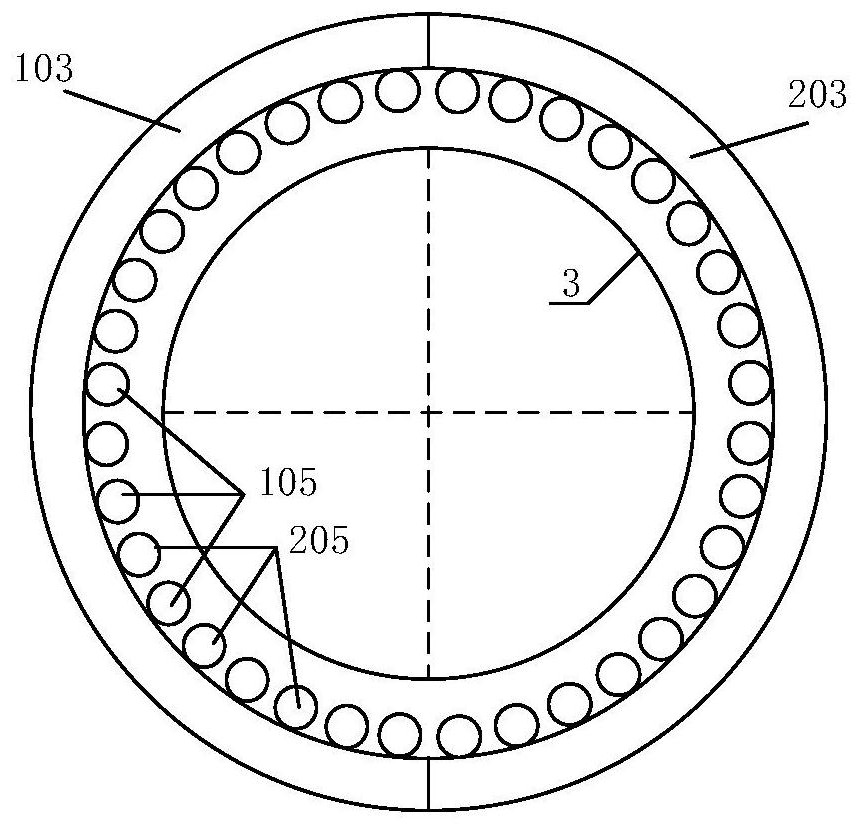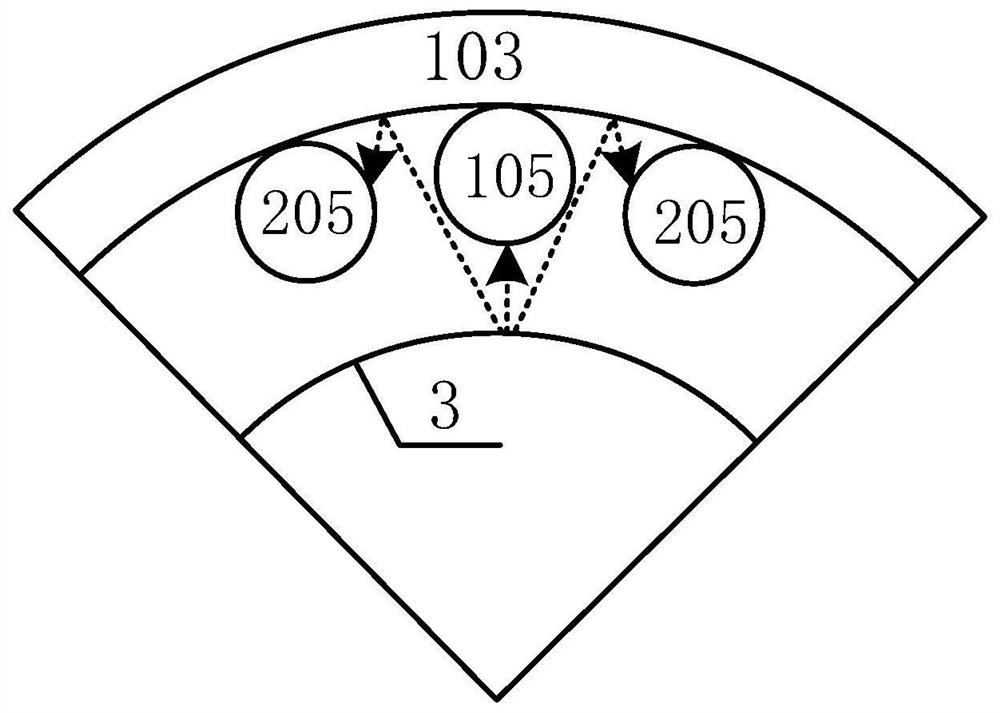A passive waste heat removal system based on water cooler
A passive waste heat and waste heat discharge technology, applied in nuclear power generation, cooling devices, greenhouse gas reduction, etc., can solve problems such as high construction costs, complex liquid metal cooling reactor systems, unsuitable reactor miniaturization, and compact layout, etc., to achieve Good heating effect, enhance the effect of natural circulation
- Summary
- Abstract
- Description
- Claims
- Application Information
AI Technical Summary
Problems solved by technology
Method used
Image
Examples
Embodiment
[0030] For ease of understanding, two waste heat removal subsystems are taken as examples for illustration. Such as Figure 1-Figure 3 As shown, it includes a first waste heat discharge subsystem and a second waste heat discharge subsystem, and the first waste heat discharge subsystem and the second waste heat discharge subsystem share a make-up water tank 300 .
[0031] Wherein, the first waste heat removal subsystem includes a first annular water cooler, a first upper annular header 106 , a first lower annular header 104 and a first circulating heat removal device.
[0032] The first annular water cooler in this embodiment is located in the reactor chamber 4 and surrounds the pressure vessel 3 . The first annular water cooler includes a first annular descending chamber 103 and a plurality of first water cooling tubes 105 . The first circulating heat removal device includes a first circulating heat removal tank 100 and a first separator 101 . Among them, the first partitio...
PUM
 Login to View More
Login to View More Abstract
Description
Claims
Application Information
 Login to View More
Login to View More - R&D
- Intellectual Property
- Life Sciences
- Materials
- Tech Scout
- Unparalleled Data Quality
- Higher Quality Content
- 60% Fewer Hallucinations
Browse by: Latest US Patents, China's latest patents, Technical Efficacy Thesaurus, Application Domain, Technology Topic, Popular Technical Reports.
© 2025 PatSnap. All rights reserved.Legal|Privacy policy|Modern Slavery Act Transparency Statement|Sitemap|About US| Contact US: help@patsnap.com



